
During my various presentations, centered around the Linux world, I had several times mentioned the incredible usefulness and efficiency of the AUR annex repository available from distributions with an Archlinux base. This great library, entirely managed by the user community, has serious assets that make overall system administration much more enjoyable than any other OS. Let's review the benefits but also the few small defects related to its use.
AUR ? What the hell is that ?
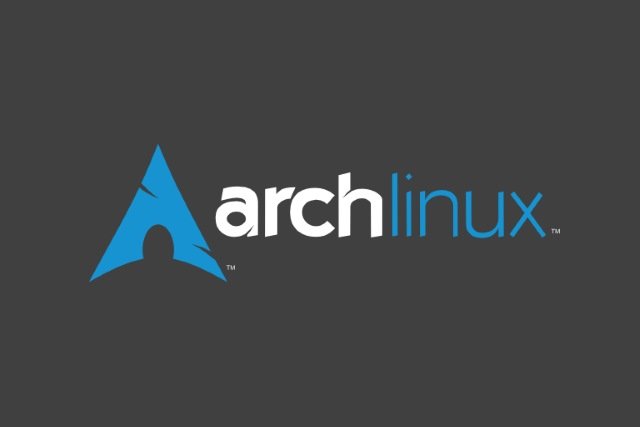
AUR for Arch User Repository is a third party repository available under Archlinux as well as its derivatives (Manjaro, Parabola, Antergos etc...). Its main function is to offer packages that are not included in the official repositories, either for reasons of popularity or because they are proprietary and therefore incompatible with the philosophy of free software. Following the principle very dear to Archlinux, which is to offer a light and fast distribution whose concept is to remain as simple as possible (KISS, acronym of Keep It Simple Stupid), the ecosystem of this branch of Linux advocates rather the availability of sources from its community as an alternative, instead of using a multitude of servers that would be added to the already established repositories.
This choice has the consequence of increasing the security but also the coherence of the whole, unlike Debian or Ubuntu and their PPA systems which can offer questionable sources, not necessarily always verified, as well as generating a possible mess in terms of system administration. Here, it is not a question of adding but of a second listing available as a base (it is however necessary to carry out a small manipulation under an Arch vanilla), which can be activated or deactivated as desired.
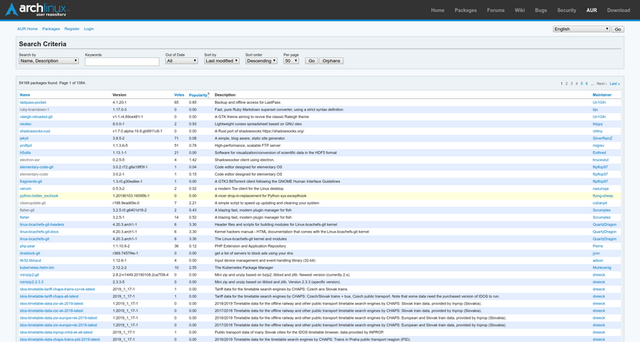
To date, AUR has more than 10752 packages fully compatible with the Pacman package manager. In other words, you will find your happiness to a large extent, since everything that can be compiled will be accessible on time. To you the joys of third-party software, updated as soon as a new version comes along! But how is all this possible ? Quite simply by the active approach of passionate people who then form themselves into maintainers. They will then take care of retrieving the source files and packaging them so that they can be installed using a PKGBUILD script.
These PKGBUILD scripts simplify building from source, explicitly listing the steps to follow with the manager and checking the necessary dependencies, while configuring the installation to match the Arch architecture. This ensures true compatibility with our system. After several checks and tests, the package is then made available on the depot and maintained by the member who has taken on this initiative. It is possible to check the existence of a particular package, to check its available version and also to access the sources, via the site listing all AUR content: https://aur.archlinux.org/
Steps to activate AUR (easy mode)
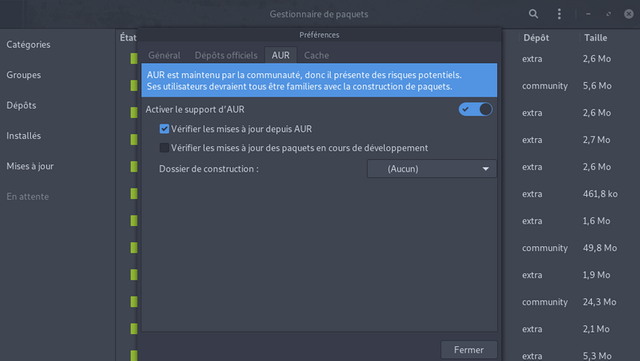
That's all very well and good, but how can we enjoy it ? To answer this question, I will use the GUI version of the Pacman package manager, called Pamac, for the sake of clarity for the most beginners among us. So open your manager and go to preferences. Choose the AUR tab and activate the support for this repository. Don't forget to check the option "Check for updates from AUR" in order to continuously update your installed software from this one. Now, you've done most of the work !
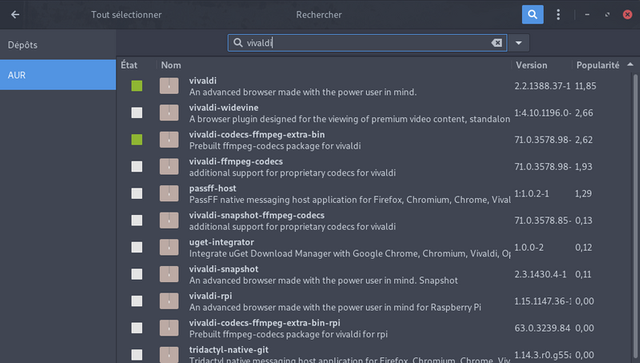
The search is automatically carried out from both repositories, when software is not available on the official, it will be automatically highlighted from AUR. As an example, I took the case of Vivaldi, which is only available on AUR. Make your choice and after that you will be able to view the content of the script. If it suits you, all you have to do is apply the installation ! From there, you can view the compilation from an operating terminal.
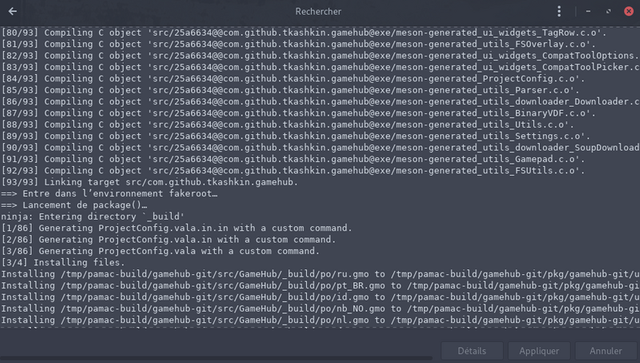
Be careful though !

It may seem a little idyllic to a Linuxian to access so many packages, in a simple way with a single mouse click. However, caution should be exercised and user feedback available on the official website should be checked before launching. Indeed, it is sometimes likely that an error slipped into the script breaks dependencies more than necessary, which can sometimes cause instabilities. These kinds of problems only occur a few times, but there is always a potential danger. Think and do your research before installing anything and everything. Another point that can be a little irritating is the signatures of GPG keys that are not systematically updated by maintainers.
There are two possible solutions, either edit the address via a terminal or wait for a reaction from it. Apart from these two potential risks, it's all good ! AUR is undoubtedly the most extensive software library of the entire Linux family! Fast, easy to use, with a clean, compatible and respectful installation of your system, it would be a mistake to do without it. On a personal level, I couldn't do without it and it is this particular element that has confirmed my decision to switch to Arch !
Downvoting a post can decrease pending rewards and make it less visible. Common reasons:
Submit